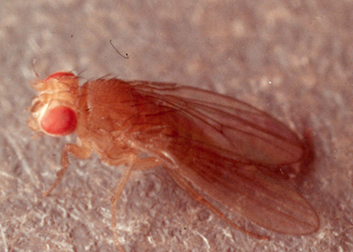
Phil Pellitteri, UW Insect Diagnostic Lab
Revised: 4/27/2004
Item number: XHT1102
What people commonly call fruit flies are flies from the genus Drosophila. Also known as pumice or vinegar flies, they range in size from 1∕16 to 1∕8 inch long, and are light to dark brown in color. Some of the common species of fruit flies have bright red eyes. Adult fruit flies can be found hovering around overly ripe fruit (e.g., apples and bananas), open beer or soft drink containers, and bread, and near garbage disposals or waste cans.
Fruit flies can breed very quickly. Eggs are laid near the surface of fermenting and rotting material, and larvae feed on the yeast associated with the decaying or fermenting material. The complete fruit fly life cycle can be completed in eight to 10 days.
Short term adult fruit fly control can be achieved using a jar baited with ripe bananas, pears or wine, and with a top funnel to keep adults trapped in the jar. Old wine bottles that have residue inside will also capture adults. Indoor flying insect sprays containing pyrethrins will control adults that are present at the time of spraying, but offer no residual control.
The only way to completely stop problems with fruit flies is to find and eliminate breeding sites. The most common fruit fly breeding sites are overly ripe, fermenting fruits or vegetables. Check onions, potatoes, squash or other produce that may be stored out of sight. Banana peels or apple cores that are accidentally swept under furniture or appliances can support significant numbers of flies. In commercial restaurants, look for leaking pipes, drains or tubes around soft drink, beer, and milk dispensers. Improperly grouted floor or wall tiles that allow food contaminated water to seep and collect can also allow breeding.
You often need to be a good detective to find breeding sites. Other places to look include:
• The bottom of trash and garbage cans where caked vegetable matter may be located;
• Drain pans from refrigerators or iceboxes;
• Bottles and cans that are to be recycled (old catsup bottles are a common source);
• Mops, rags, brooms or buckets that are soiled with garbage-laden water or are sour smelling;
• Broken drain traps, or floor drains that contain fermenting organic matter;
• Rotting bulbs, or wet, decaying plant material.
For more information on fruit flies: Contact your county Extension agent.
Download Article





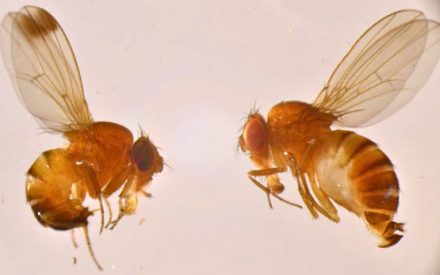 Spotted Wing Drosophila
Spotted Wing Drosophila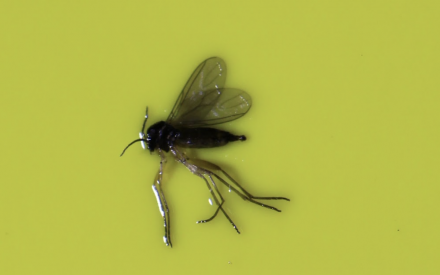 Fungus Gnats and Shore Flies in Greenhouses
Fungus Gnats and Shore Flies in Greenhouses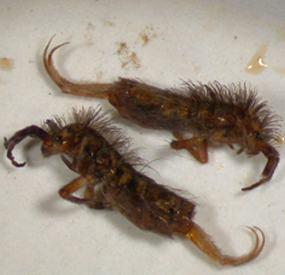 Springtails
Springtails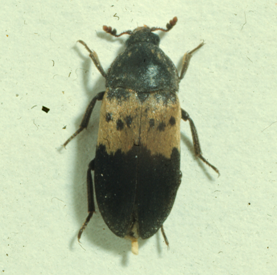 Larder Beetles
Larder Beetles


